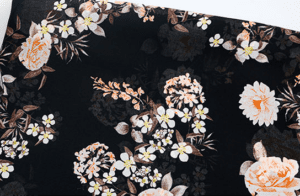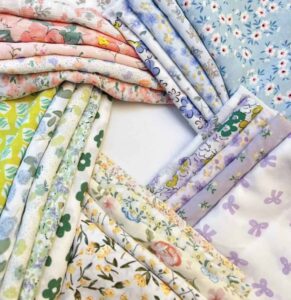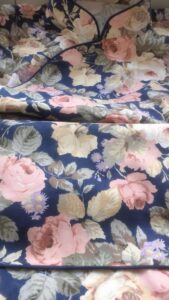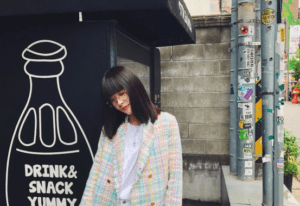Consider the 5 aspects
1) Business Plan
Your business plan needs to set out how you intend to manage your clothing brand.
It should be written as realistically as possible.
Remember, it’s better to underestimate your profits and thus get surprised by the realization, rather than overestimate your ability and end up disappointed.
— Designers who have a holistic sense and think logically are better off.
2) Finance
In the early stages, money is the lifeblood of a business. Even if you don’t have outside investment, it’s important to keep your company finances moving smoothly and have some grounding.
You can start with the following.
How much money do you need to launch your clothing brand? Have you saved enough money for this, or do you need a loan from the bank?
What are your costs? Make a list of all expected costs (materials, manufacturing, supplies, equipment, advertising, marketing, overhead, etc.). Add up the costs needed to run the business for one year. Will your achievable revenue offset these costs?
— Having money only determines whether you can get started; running the business is what will last.

3) Wages
Imagine how long you can accept no salary.
Do you want to work full-time on this clothing brand? If so, how many years are you willing to wait before the company becomes profitable and you earn your own salary? Or do you just want it to be a side hustle? It’s great if it makes money, but you should value the thing more than the profit. Try to measure your level of commitment.
At the same time, be prepared to not pay yourself for the first year or so of operation, unless you’re very lucky.
— It’s still money, to put it bluntly.
4) Research
Who are your current and possible future competitors? Who is your target market? How much of your design do you think you can sell in retail and wholesale each? Ask people around you to get feedback. Talk to mall owners and potential customers.
It’s a good idea to work undercover in a store that fits your target market. Find out what the store is stocking and what customers are buying.
Find an example of a garment similar to the one you want to design and find out how much they sell. This will be a strong support when you create your own clothing brand.
— Know your enemy and you’ll never lose a battle.
5) Legal
First, decide on the structure of your business (LLC, partnership, corporation, etc.). You may want to consider hiring an attorney as a consultant or to come in and help out whenever you need it.
— At least don’t be legally illiterate.

Lay a good 3 foundation
1) Team
What team structure, what are their respective responsibilities? Can you make the best use of people, one on top of the other? What kind of competent helpers do you need, and what can you pay them?
If your product is boutique level, you need to do all the cutting, stitching and trimming yourself. And if you plan to start a larger business, you will definitely need to hire people to help with production.
2) Brand name
Now it’s time to make some interesting and tasteful decisions! How you build your brand will affect who is associated with your clothing brand, so make smart choices.
Choose a name. What kind of name will represent your clothing brand?
You can use your own name (like Issey Miyake or Armani).
Or an unexpected word (like Exceptional).
Or a demographic niche (like Lady House or BOSS).
Whichever you choose, make sure it is unique and recognizable. I especially emphasize one, now the Chinese independent designer brands are moving to get a few English letters, afraid that Chinese is not foreign enough. Personally, I think it is not desirable, the recognition is too low.
3) Logo
List a wide range of different logos, and then narrow down the scope until you choose one that you are completely sure of. People will gradually recognize your logo, but if you keep changing them, they can easily be confused. Check to make sure you have a domain name available for the name you pick, and consider registering a trademark.

Grasp the 4 links
1) Product Design
This should be the best and most interesting for those of you who come from a designer background, but it’s really only 10-15% of the process! Make sketches, seek feedback, and decide which designs will be your first collection. Pick out fabrics and materials that are cost effective and popular.
Ask anyone in the line if there are any limitations. For example, if they can’t print certain colors. If you are designing a T-shirt, get the following information from the printer: the size (gauge) of the design (how big it can be), the type of garment you want to print, and the weight/quality of the fabric (for example, a thinner, cheaper fabric for summer clothing).
Details are everything. When you sketch, create a sketch that clearly shows every detail with accurate terminology. If you don’t know what the terminology is, find the appropriate photo for the factory and ask them what they call it. Learn the lingo to be prepared to correctly identify the fabric (output), content and structure you wish to use.
2) Process schedule
The design of a collection usually depends on the season. Most buyers and brands will order at least one season in advance, and even if you are a self-selling brand, you need to work out the design, production and delivery schedule accordingly.
3) The production process
Give your sketches to a boardroom, factory or printing, embroidery, etc. factory. Usually a sample board, a modification board and a production board will be developed first. Let you confirm that the garment to be produced is the kind you want.
No matter what, be sure to ask questions sufficiently and always put all agreements in writing.
4) Find and optimize a partner manufacturer

Marketing your brand well
1) Website, new media platform display
In addition to the website, when the new media platform is the most fashionable and effective. For example, microblogging, public platform display, and traffic platforms such as a sound.
2) Platform marketing
In just one year these costs will be high enough to make you feel the pressure. The following are brand marketing approaches you can implement.
Write a soft copy and send it to other large public and other media platforms.
“Buy” advertising space in publications and websites that your target group is likely to read.
Sponsor events that cater to your target audience.
Ask traffic stars to endorse you (preferably with connections, money is too painful). Or give it away for free to the most popular people who wear your stuff. (This requires a high starting point for your brand)
3) Increase your own promotional value
Think of yourself as a walking billboard, wear your own fashion and ask people for their opinions, then take notes, this will also help you design a product that people will love.
Taking everyone’s suggestions is like having your own marketing and design team, but it doesn’t cost anything. Money is tight in the beginning, so take advantage of every opportunity available.
As a side note, before starting your own designer brand, you also need to prepare.
Mentor — You really should have someone who can bridge your field’s blind spots and resist the challenges of brand bottlenecks.
To sum up.
In fact, there are two options for independent designers, one is to always just be a niche independent designer.
Adhere to their personal style, in business only seeking sustainable development, not seeking to make a big profit. Although these designers do not necessarily have a successful commercial scale in the traditional sense, but this does not mean that they do not become outstanding designers.
For example, Alexander McQueen, who died in 2010, was not very successful commercially, but his personal history of design is undoubtedly a landmark figure. If McQueen had not been acquired by the Gucci (now Kering) group, but was an independent designer, he would probably not have died prematurely.
Another category of designer brands is those with commercial capital injected into them.
Many independent designers look forward to the investment of professional capital, believing that with money and personal design talent, they will succeed.
In fact, the failure of many brands is precisely the intervention of professional investors.
The job of professional investors is to maximize the profit in the shortest possible time, and their investment goal is simple – “profit”. Once professional capital is involved, designers are bound to waver between their personal design style and commercial capital. This is not an easy process.
Therefore, when investors are needed, designers should define their future position clearly.
For independent designers, perhaps growing into a real designer brand is most people’s dream, but in this process, the designer himself needs to pay for the price is also very expensive.
There is no good or bad dream, but designers should know what they hope to get and what price they need to pay for it.
Once the goal is clear, the designer should do is “stick to it”.
























